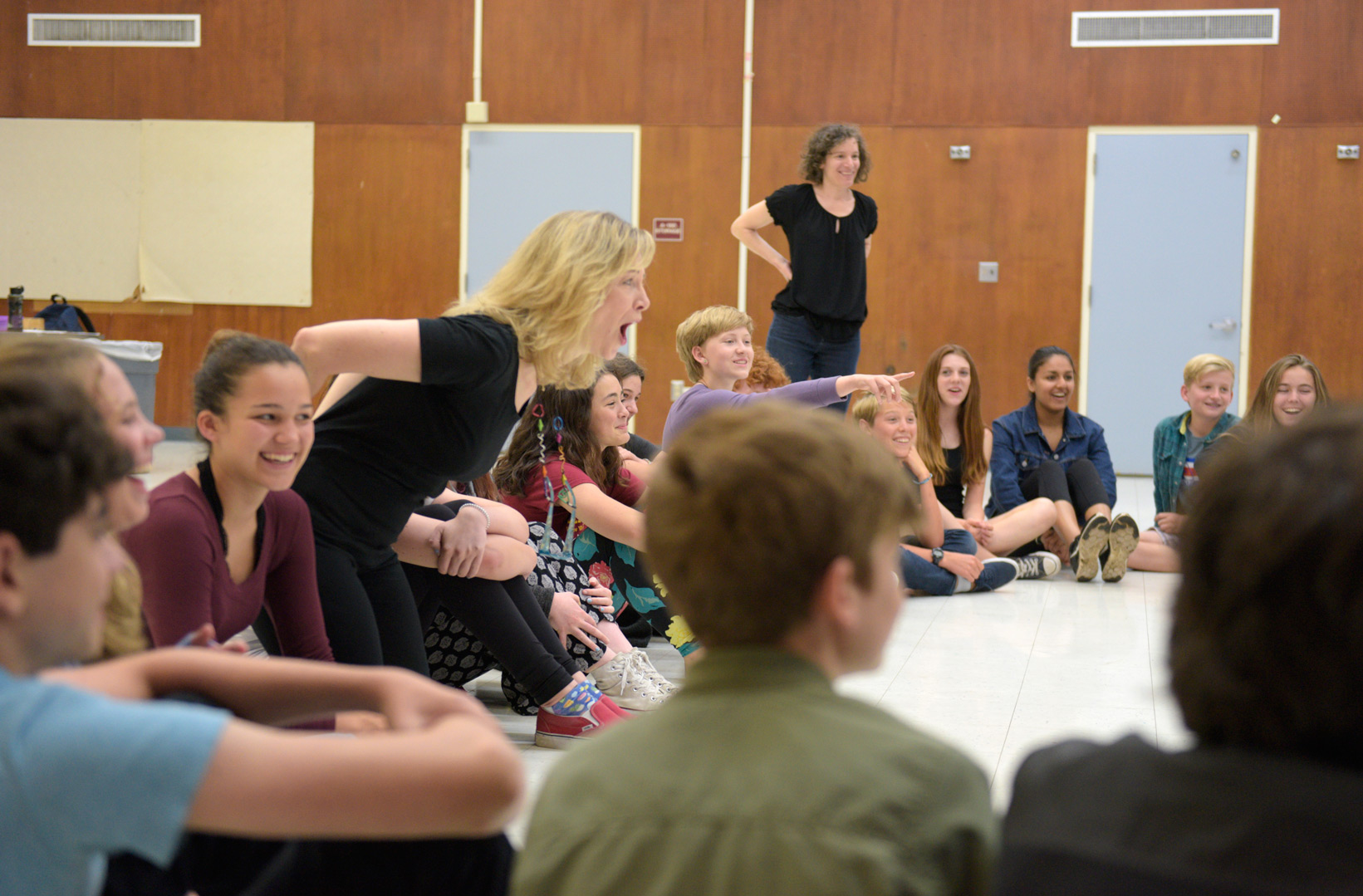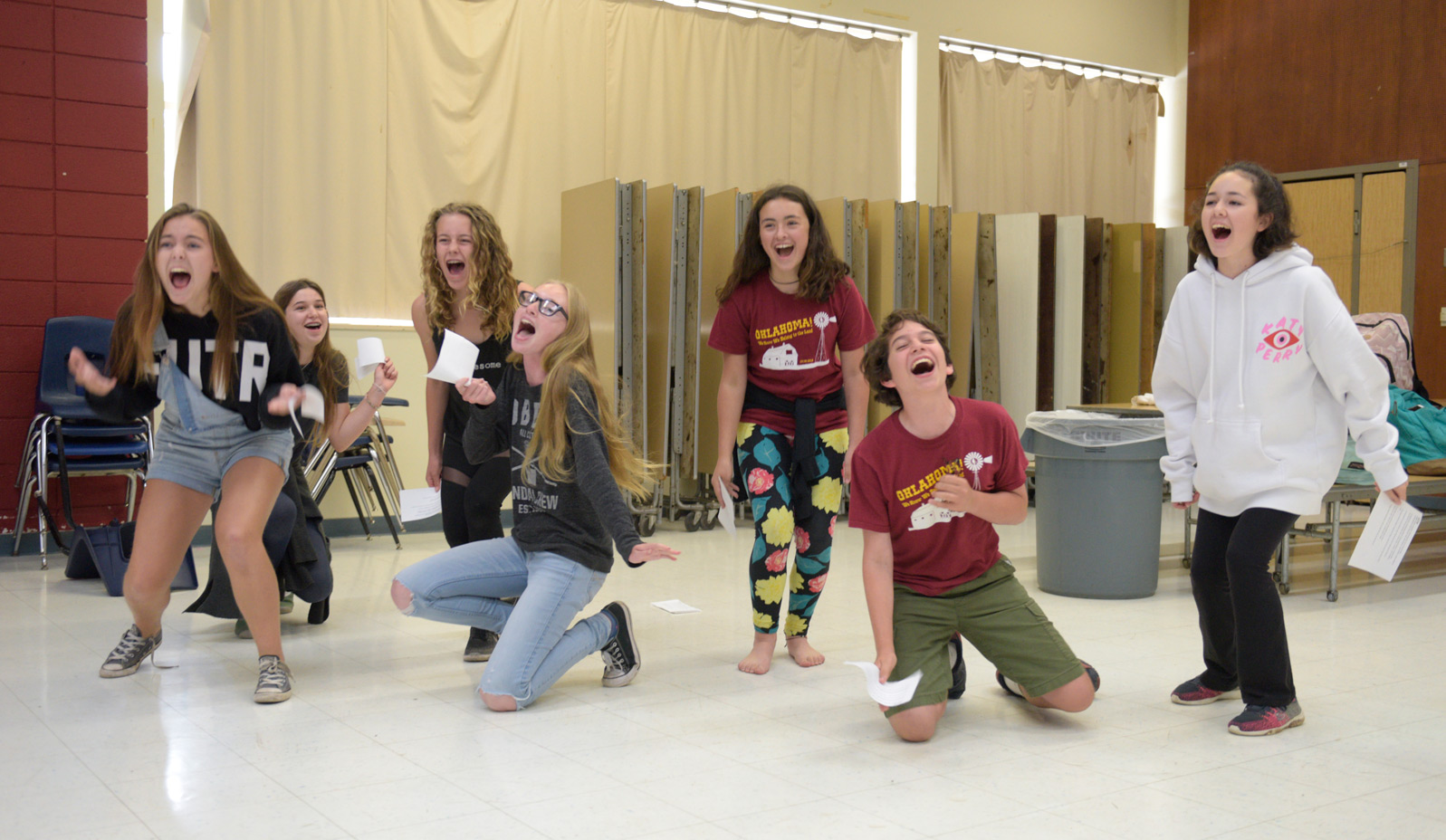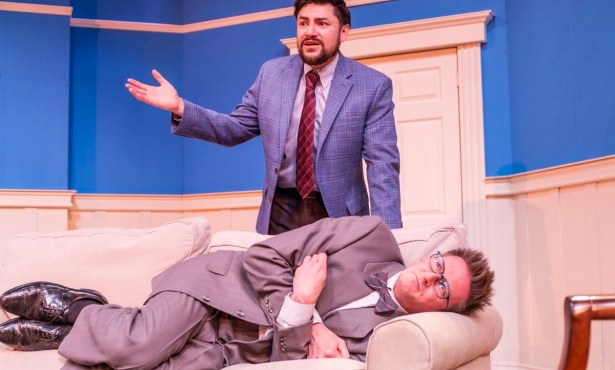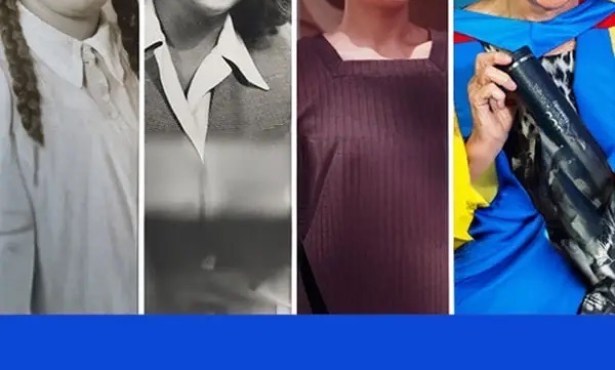Shakespeare & Me Reaches Out to Public Schools
UCSB Students Bring College-Level Acting to 3rd-12th Graders

Backstage at the theater in Goleta Valley Junior High, 11 UCSB students have just performed an intricate 45-minute introduction to Shakespeare, but all they want to talk about is what’s still to come — the workshop. In UCSB faculty member Heather Stanford’s program Shakespeare & Me, these workshop sessions bring current UCSB students into public school classrooms anywhere from 3rd to 12th grade. They are one facet of an ambitious project that combines learning with doing and brings the joy of college-level acting to the people who stand to benefit from it the most — younger students.
As one of the enthusiastic UCSB undergraduates enrolled in the spring 2018 edition of Stanford’s course on Shakespeare and education told me, “The best thing is when a 5th or 6th grader who has been kind of quiet speaks up at the end of the day and says, ‘My partner made it fun.’” When the rest of the group nodded in agreement, another added that this is all a part of “reinforcement” — an educational technique that emphasizes the value of individual recognition through performance.
Shakespeare & Me is remarkable for its breadth and intensity. Since May 1, students in the program have visited five public high schools, two junior highs, and two primary schools, all in Santa Barbara County, but many, such as Carpinteria and Santa Ynez high schools and Los Berros Visual and Performing Arts Academy in Lompoc, that are beyond the limits of the cities of Santa Barbara and Goleta.

Although part of the job involves bringing UCSB students and Shakespeare to these schools, Stanford has also been successful in bringing those students to UCSB for matinee performances there. Professor Irwin Appel praises this aspect of the program, saying, “These student matinees expose young people to theater in a bold, relevant, and exciting way and also are essential to the educational mission of our theater department and the arts and humanities in general.”
In terms of her approach to working on-site, Stanford displays remarkable flexibility: “I do solo workshops and residencies throughout the academic year, grades 3-12. I partner with the teachers on anything Shakespeare related. I will help introduce a unit, a play, or maybe revive their sagging spirits halfway through the unit. In addition to ‘single shot’ workshops, I offer extended residences, culminating in some sort of performance — even a full production, if anyone wants to try.”
At UCSB, Stanford provides courses that address the needs of BA students who may not have the same access to movement and voice classes as their peers in the BFA program. The more enthusiastic of these students will take Stanford’s winter-term course in Acting Shakespeare and her spring-term class on Shakespeare and education, giving them a chance not only to act, but also to teach the plays and sonnets.
No matter what their level of experience, Stanford clearly holds every student to the same high standard, as I saw in their performance of Shakespeare & the Language that Shaped the World or SLaW. This witty and substantial script was developed at Shakespeare & Company in Lenox, Massachusetts. It’s a comprehensive overview, but the way it’s presented is as an acting challenge. With more than 100 cues to memorize, each student must come in on time and hand off to the next player with speed and clarity. This added razzle-dazzle has even a middle schooler with little knowledge of either the Bard or stage acting technique aware that something unusual and exciting is happening right in front of his or her eyes. With the pop and sizzle of a circus act, SLaW delivers the information and perspective of an encyclopedia, all in 35-45 minutes.



